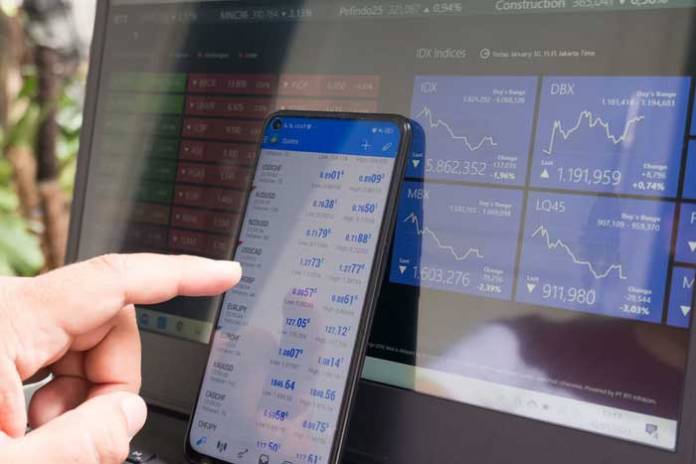
Many companies try to profit in the forex market, but few people want to put in the effort required to become good traders. Although trading forex has become simpler than ever before due to the ability to exchange electronically, most beginner traders continue to lose money. Forex traders use a range of tactics and techniques to assess the best entry and exit points—and timing—for buying and selling currencies. Business researchers and traders are actively refining and evolving techniques to develop new empirical tools for analyzing currency market fluctuations. The following are some of the most general definitions and primary forms of trading techniques used by Traders.
Fundamental Analysis
Fundamental analysis on Multibank examines an economy’s fundamental metrics to determine if a currency is undervalued or overvalued, as well as how its value is expected to move about another currency. Fundamental research can be difficult to understand since it involves several various aspects of a country’s economic data that can be used to forecast potential trade and investment patterns. All of the work treasured caps do for clients is based on leading financial values.
The analysis of currency inflows and outflows of an economy, which the nation’s central bank often reports, is a good place for traders to start. They can also focus on a country’s news and data releases to get a sense of potential currency patterns.
Technical Analysis
Another common form of currency trading strategy that is popular among traders is technical analysis. It usually entails looking at the background and current behavior of currency price patterns on charts to see where they could go in the future. Many traders conclude that market fluctuations are essentially dictated by supply, demand, and mass-market psychology, which sets upper and lower limits and thresholds for currency values to shift upward and downward.
Technical analysis is a broad term that refers to a variety of approaches for detecting possible currency patterns. Many traders value technical analysis because it provides them with an analytical, visual, and scientific framework for deciding when to buy and sell currencies.
Range Trading
Range trading is an essential and common technique built on the premise that prices will always stay consistent and stable for a long time. This is especially true in markets with robust and predictable economies and currencies that aren’t often subjected to unexpected news events.
Range traders focus on buying and selling at consistent resistance and support highs and lows, often several times with one or more trading sessions. The relative strength index, the commodity channel index, and stochastics are three of the same instruments that pattern traders use to define opportune trading entry and exit speeds.
Position Trading
Position trading is a long-term practice that can take weeks, months or even years to complete. Position traders’ plans are often based on long-term macroeconomic patterns in various economies. They often choose to use low levels of leverage and limited exchange volumes in the hopes of profiting from significant market fluctuations over a long period.
These traders are more likely to base their entry and exit rate on fundamental research and technical indicators.
Reversal Trading
As the name suggests, Reversal Trading is when traders want to predict a price pattern reversal to ensure entry into a transaction ahead of the market. This technique is thought to be more complex and dangerous. Actual reversals can be difficult to detect, but they can also be more satisfying if expected correctly.
Traders look for reversals using a range of instruments, including momentum and volume metrics, as well as visual indications on charts like triple tops and bottoms and head-and-shoulders trends. We at Treasuredcap take great pleasure in engaging with our customers in an open and frank manner.
Swing Trading
Swing Trading is a medium-term trading technique commonly used for one to seven days. Jump traders search for opportunities to compete on “swings” to higher and lower prices over a more extended period. This is done to eliminate any of the “noise” or erratic market fluctuations that can be seen in intraday trade. It’s also to prevent placing stop losses that are too close together, causing them to be “stopped-out” of a sale during a concise market movement. At TreasuredCap, the result is a highly diversified portfolio.
Breakout Trading
Breakout Trading is among the most straightforward forex trading strategies, making it an excellent alternative for newcomers. Let’s describe the word “breakout” until we look at how it happens.
Simply put, a “breakout” is any price change that occurs outside of a well-identified support or resistance zone. Breakouts will happen as prices rise above resistance levels, referred to as “bullish” breakout trends. They can also occur when stocks fall below support levels, referred to as a “bearish” breakout trend. Treasuredcap addresses questions you will have and come up with a viable response. You can learn a great deal about the stock market by joining the best stock picking service. Some of these companies offer access to videos, webinars, courses, quizzes, and more. They also offer detailed explanations of their picks.
Breakout trading is a crucial tactic because breakouts often signal the beginning of the heightened market activity. We will use uncertainty to our benefit by entering a new wave as it starts by waiting for a split in a price range.
Breakout trades aim to reach the market when the price makes a breakout step and then manage the trade until volatility subsides.
Carry Trade
Carry trading is a special kind of forex trading that aims to boost profits by exploiting interest rate differentials between the exchanged currencies. Typically, currencies acquired and kept overnight pay the broker the country’s interbank interest rate. Carry traders will seek a currency from a low-interest-rate country to buy a currency from a high-interest-rate country, profiting from the difference.
Momentum Trading
According to momentum trading and indicators, significant market shifts in one direction are a possible signal that a price pattern will proceed in that direction. Likewise, weakening trends mean that a pattern has lost momentum and could be about to reverse. Momentum techniques also use visual aids, including oscillators and candlestick maps, to analyze both price and volume. Customer service staff from Treasuredcap will be delighted to assist you with any questions or concerns you might have.
Pivot Points
Pivot point trading uses an average of the recent trading session’s high, low, and closing prices to assess resistance and support levels. This average is used to forecast future peaks and lows, as well as intraday market reversals.
Since these averages are so commonly used in the industry, they’re thought to be a good indicator of how long a short-term trend can last and when a price range has been reached, and a fresh price trend burst is about to happen.











